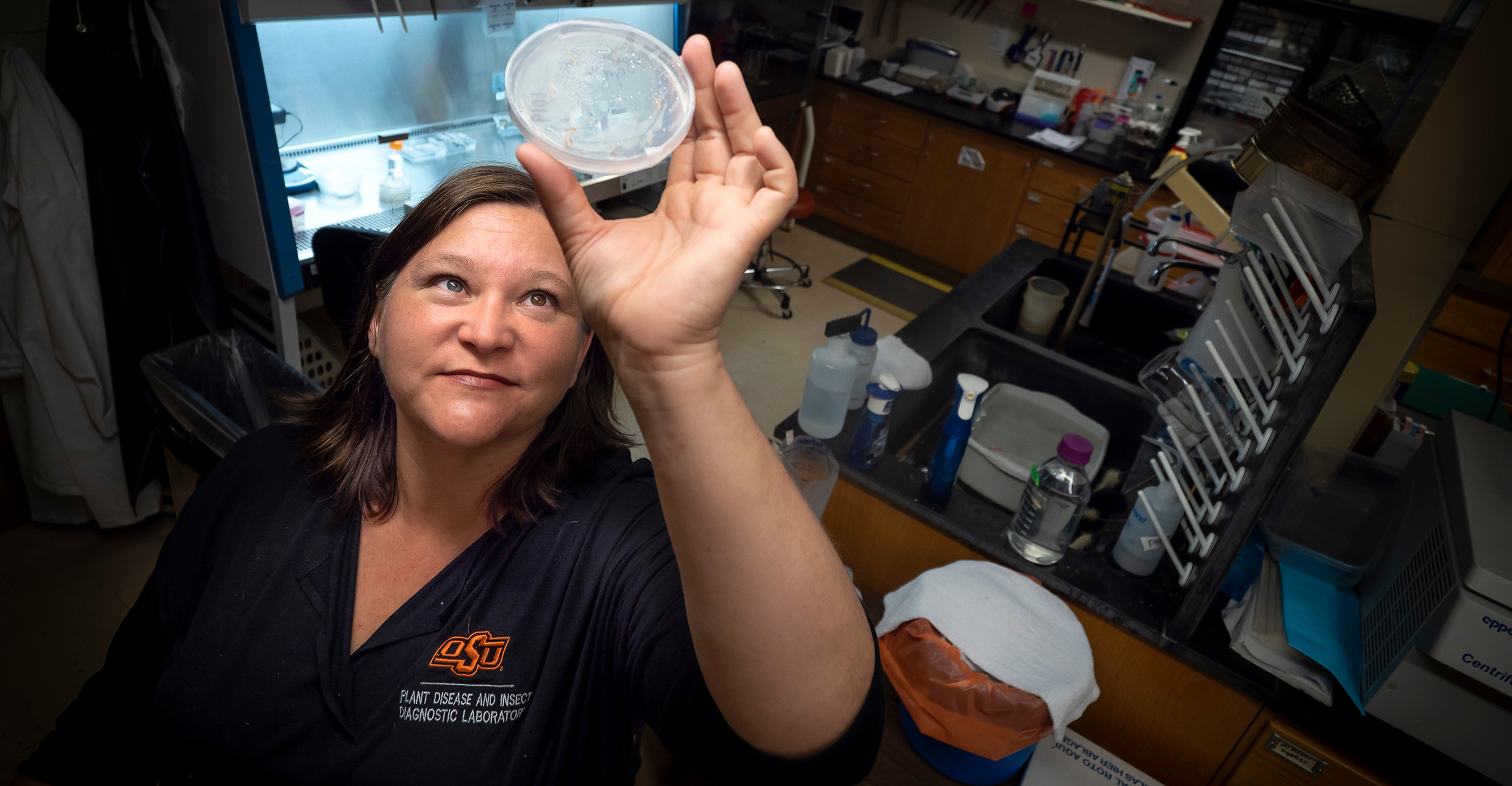
OSU plant and insect detectives are on the case
Friday, July 30, 2021
Media Contact: Donald Stotts | Agricultural Communications Services | 405-744-4079 | donald.stotts@okstate.edu
A homeowner’s formerly beautiful bush outside the front entryway is far behind in sprouting its usual amount of foliage. Mysterious insects can be seen crawling up and down the branches. What to do?
Time to call in the detectives at Oklahoma State University’s Plant Disease and Insect Diagnostic Laboratory. The lab is part of OSU’s Department of Entomology and Plant Pathology and has been providing state residents with accurate diagnoses of plant diseases and insect pests, as well as recommendations for their control, for more than 40 years.
“We started as a mobile lab in an RV that traveled around the state,” said Jen Olson, OSU Extension plant pathologist-diagnostician and laboratory director. “Today, we’re in the Noble Research Center on the Stillwater campus, but still serve the entire state. Our capabilities have expanded significantly over the decades.”
The laboratory operates three separate services: plant disease identification, insect identification and digital diagnostics, a no-cost internet-based identification service that uses digital images instead of mail-in samples. Many OSU Extension county offices have the necessary digital imaging equipment and personnel trained to assist in its use.
“Your county Extension office is the best place to start the process,” Olson said. “Your local agricultural or horticultural educator may be able to identify the problem on the spot. If not, county office personnel can help ensure collection and mail-in protocols are followed, which can affect the accuracy of a diagnosis.”
Information on collecting and packaging samples is also available online. Some services may require a fee, others are provided free of charge, depending on the specific type of analysis involved. Check the laboratory website for current prices.
“What we do is like a crime scene investigation,” said Sara Wallace, OSU Extension assistant specialist assigned to the laboratory. “The plant is a victim. We try to discover the accomplices — weather, insect vectors and pathogens. Sometimes the pathogens are on the ‘most wanted’ list and we have to quarantine the plant. We gather information about the crime scene and use various types of technology, from basic culture methodology to molecular techniques that involve DNA extraction and sequencing, to uncover the culprit.”
Lately, tomato samples have been among the most common plants coming into the laboratory. Two recent submissions had a virus, two had fungal issues and one had herbicide damage. Evergreen trees continue to struggle from the winter polar vortex that hit Oklahoma earlier this year, plus there was the late frost in April.
In terms of insect identification and control, one of the most common reports coming into the laboratory this summer was about darkling beetles in hay. The beetles are dark brown to black in color and are reminiscent of black blister beetles, which can be highly toxic to livestock.
“We’ve also been receiving numerous photos of large wasps, particularly cicada killers, yellowjackets and European hornets,” said Alex Harman, insect diagnostician. “People have been worried they might be the so-called murder hornets that were found in the Pacific Northwest last year.”
A popular laboratory resource is its extensive online database of images and information on major plant disease and insect problems in Oklahoma.
“Using the database can help save a person time and effort,” Harman said. “There is a lot of basic information on site. You might even find it fun and educational — something the whole family can do together.”
For more information, contact Olson by email at jen.olson@okstate.edu or by phone at 405-744-9961, or Harman by email at gotbugs@okstate.edu or by phone at 405-744-9961.
